Refund Guaranteed
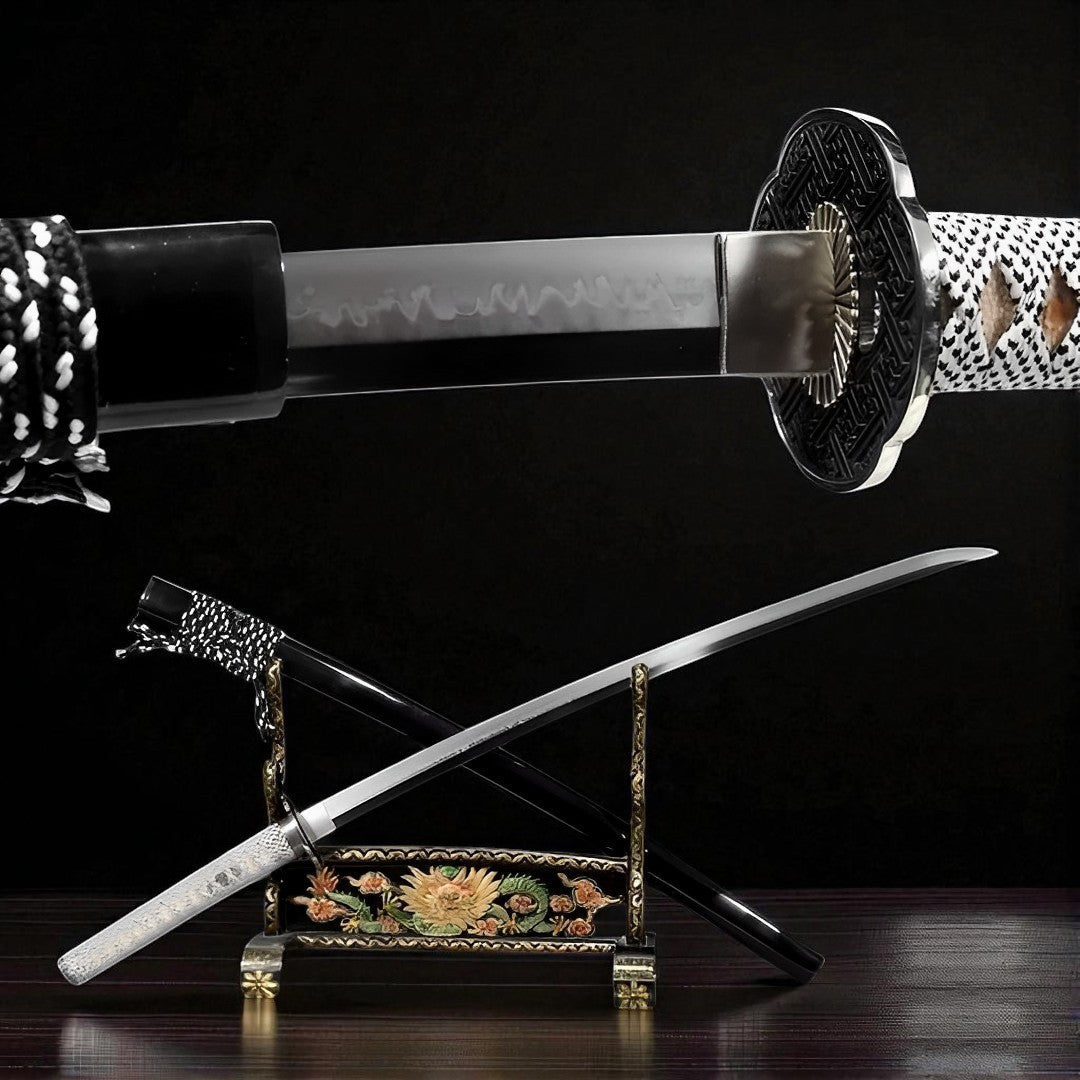
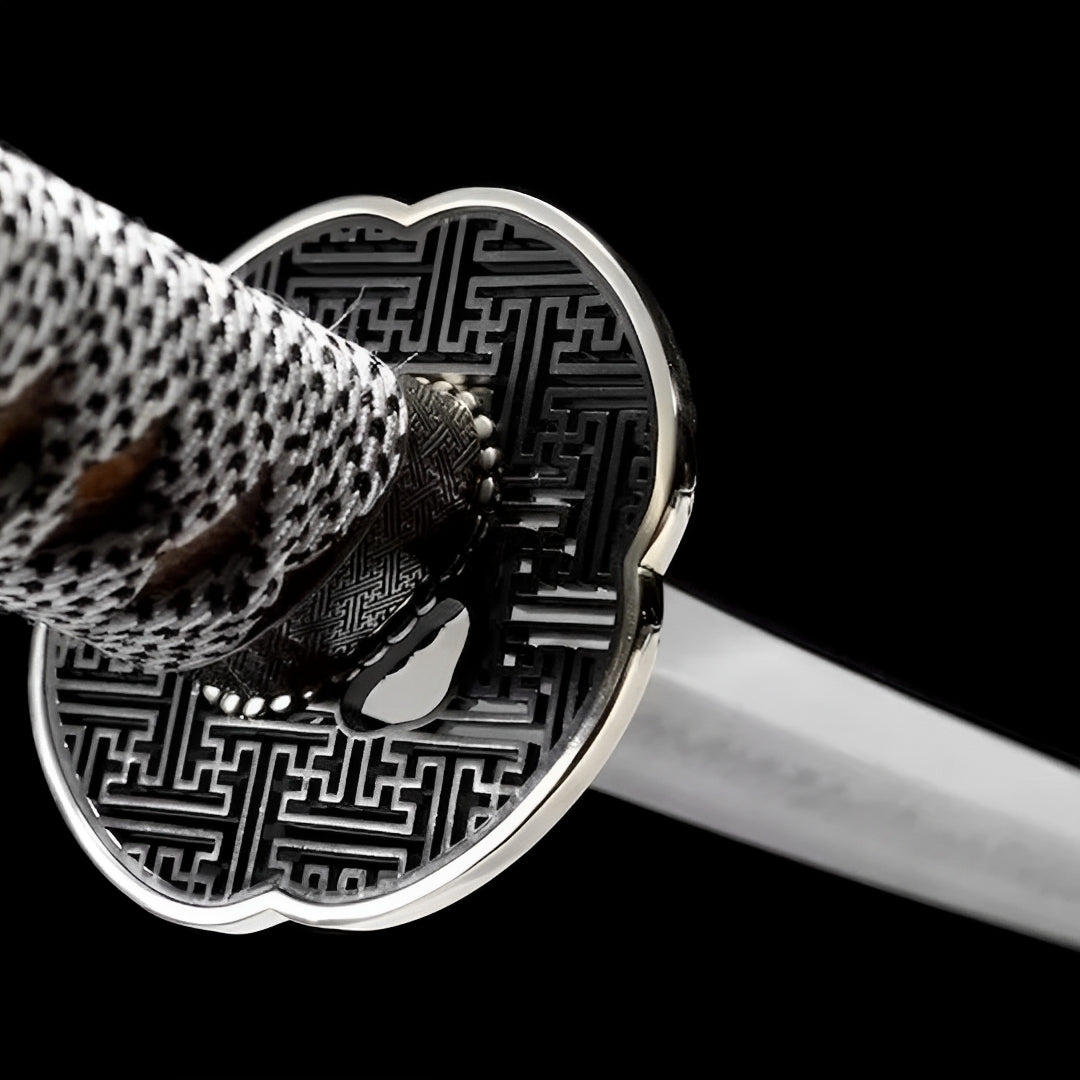
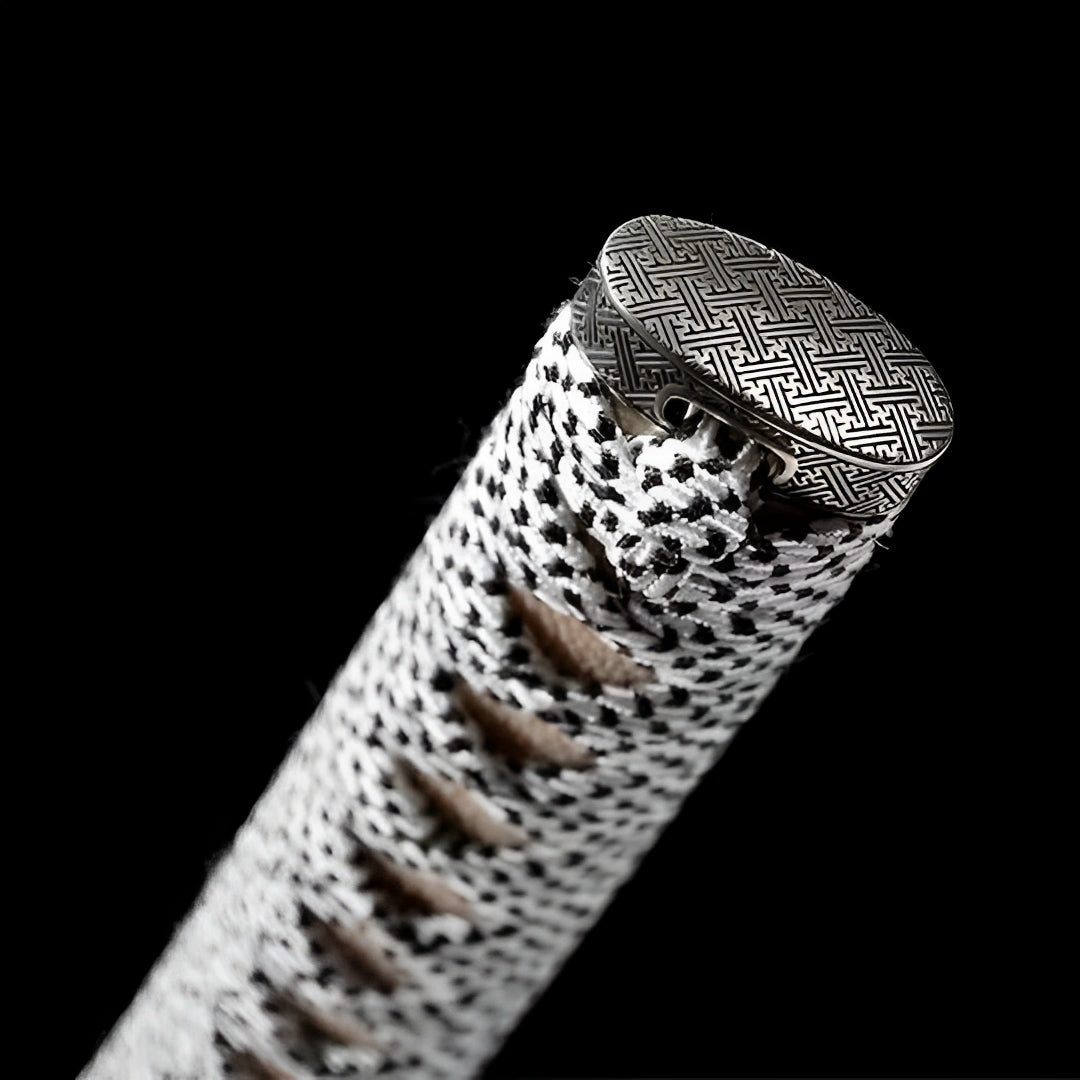
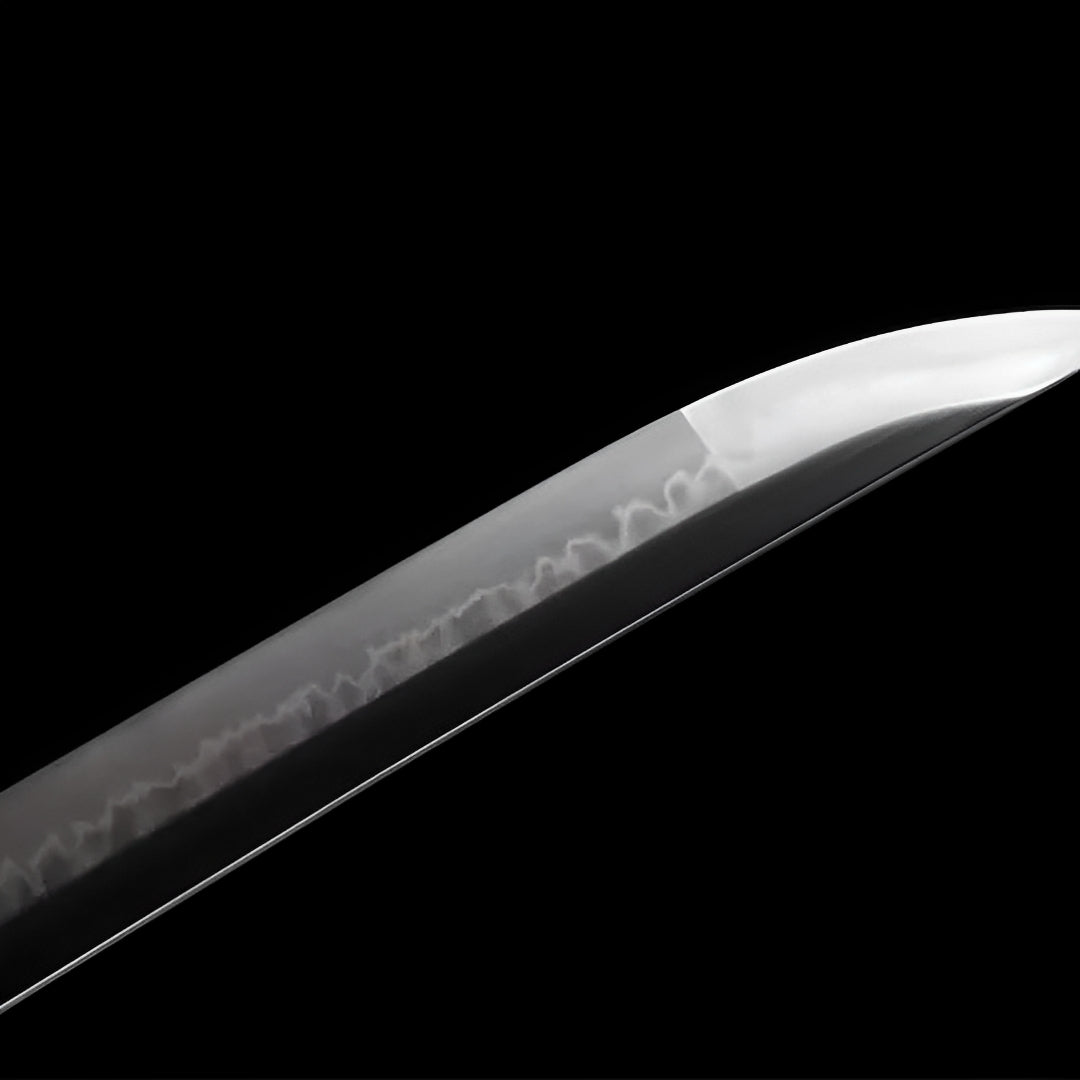
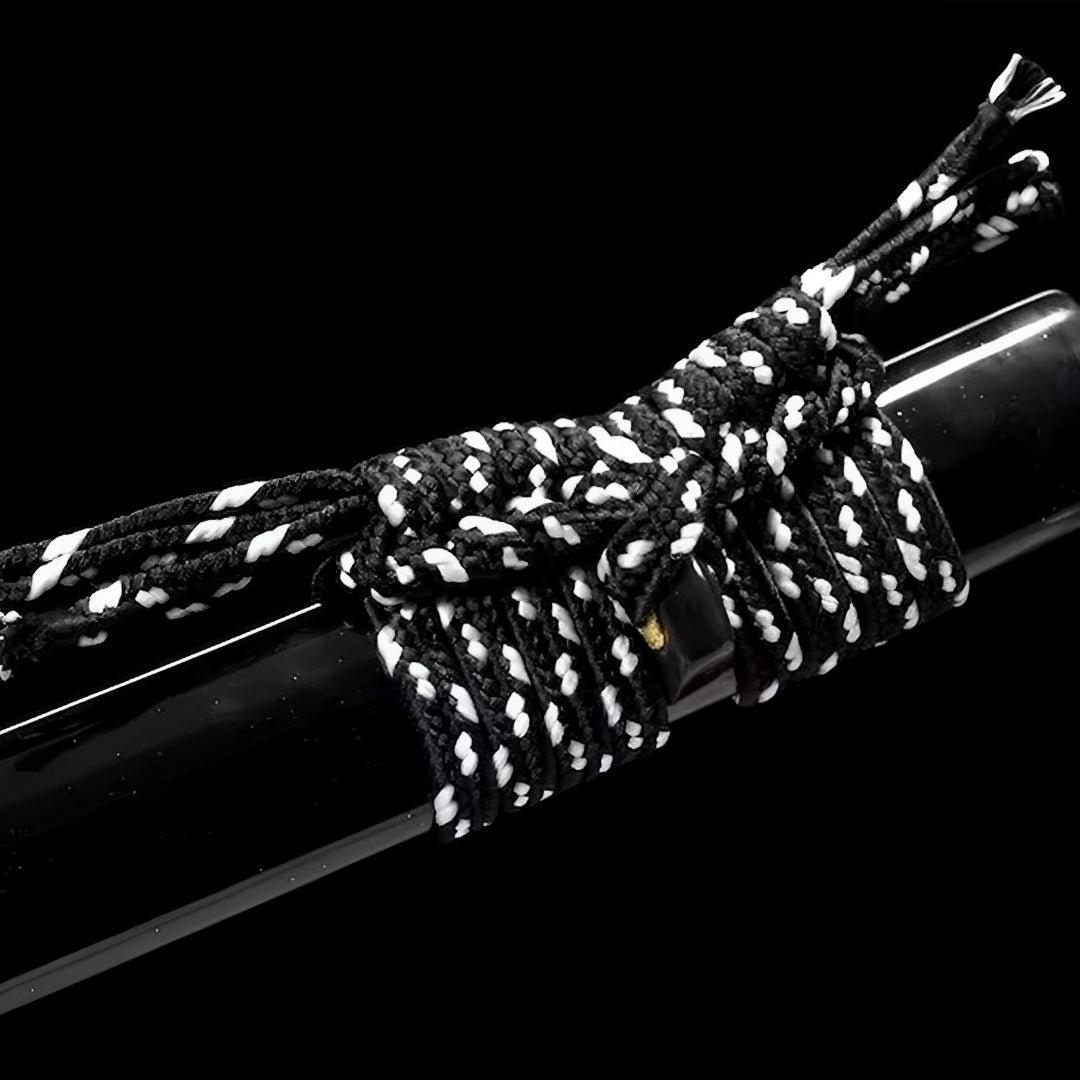
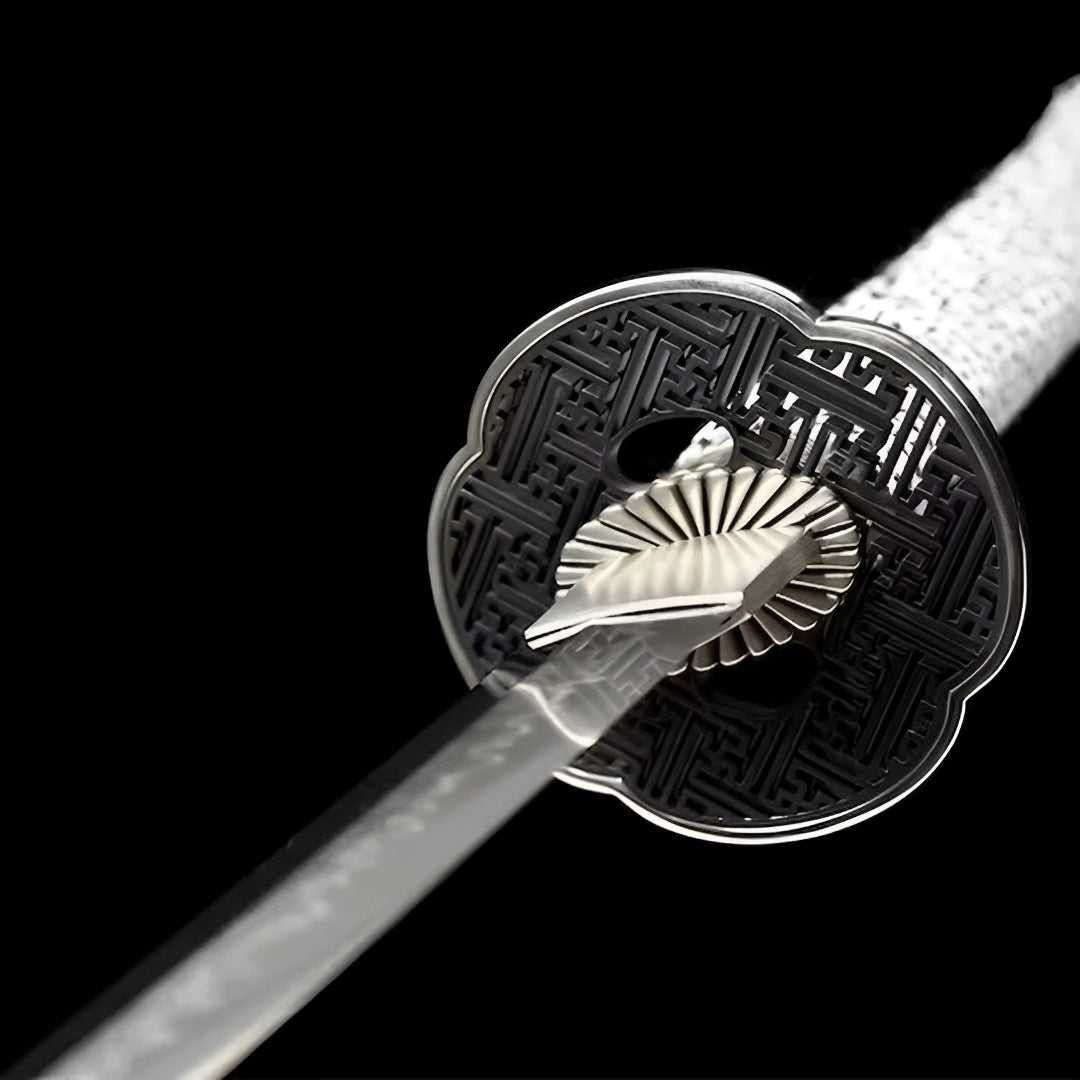
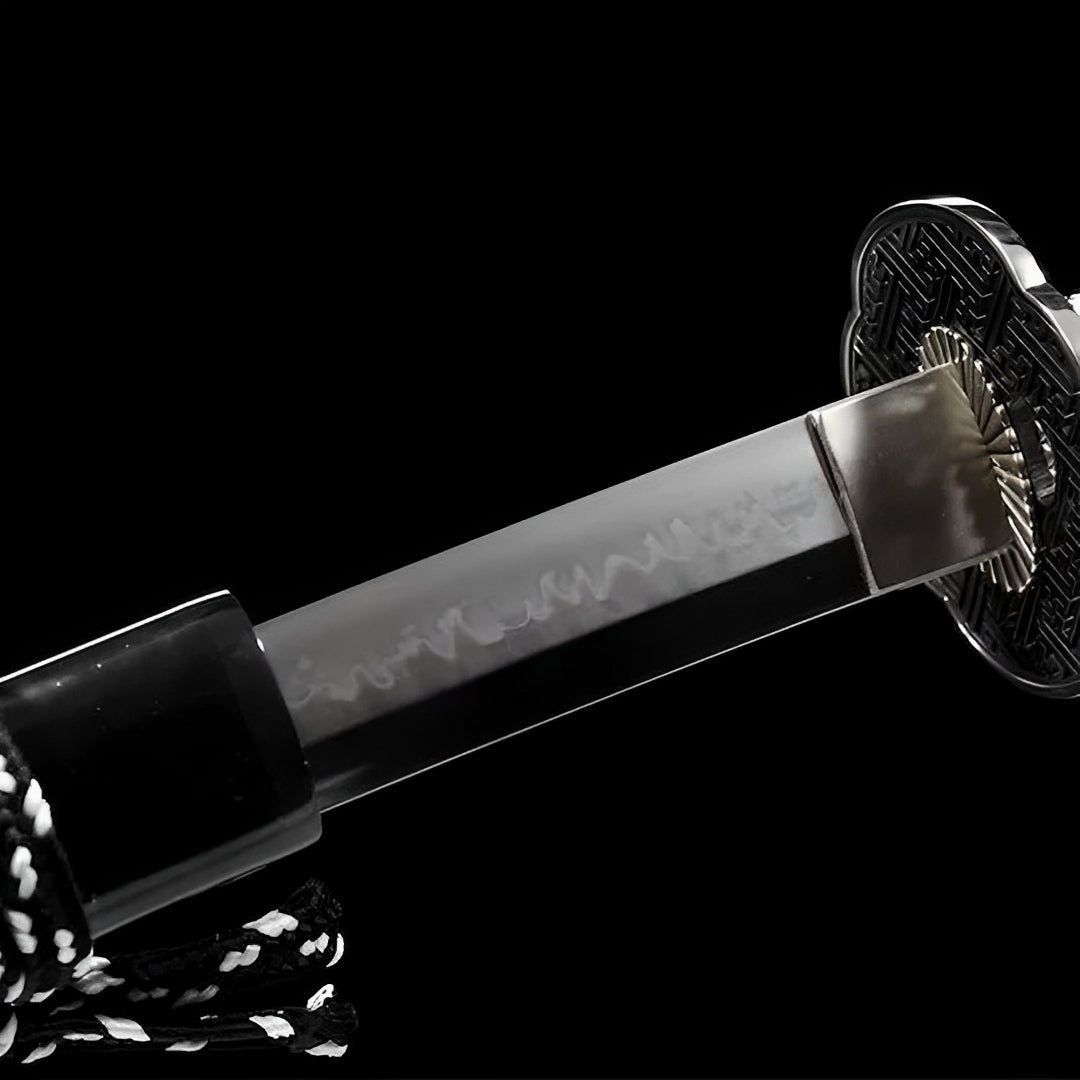
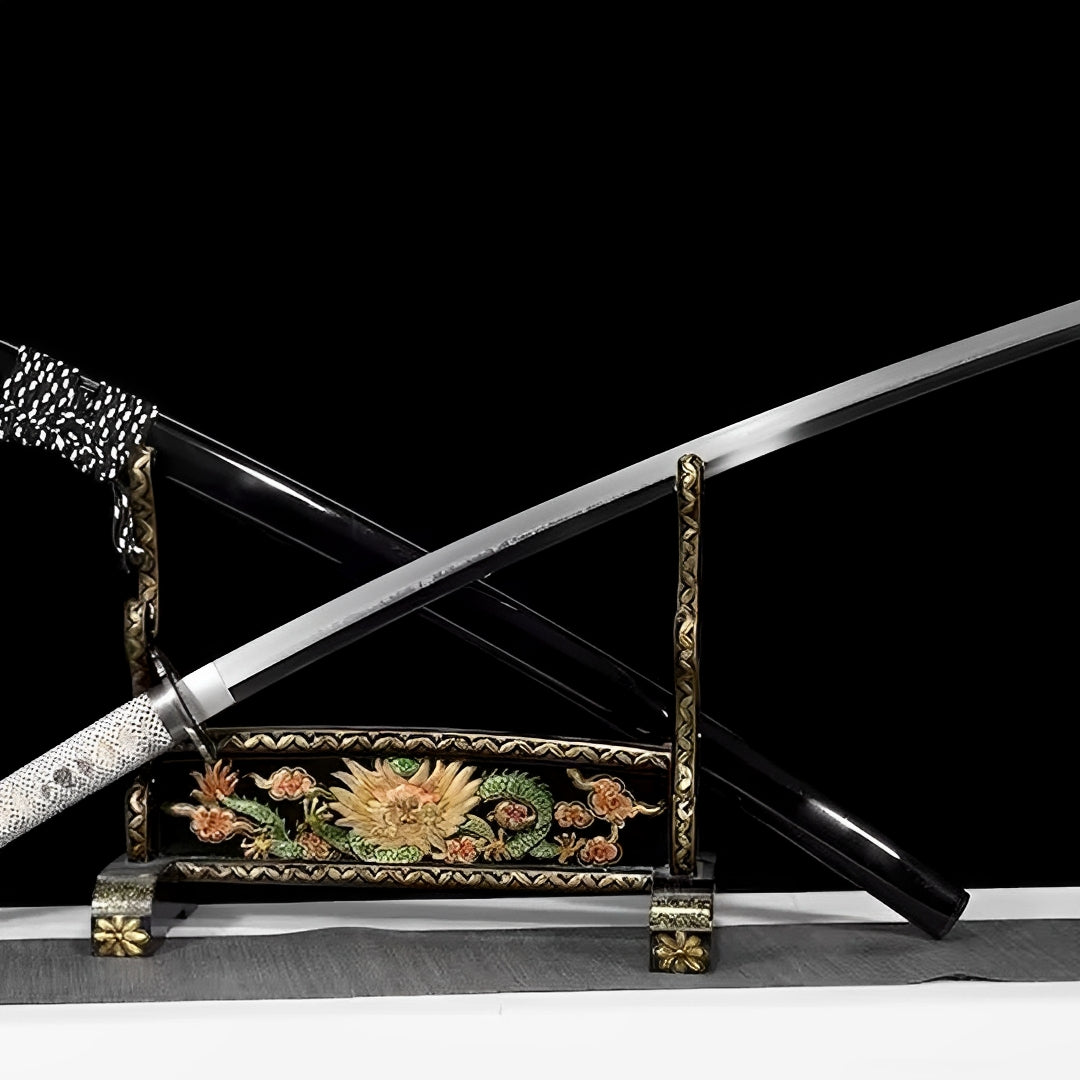
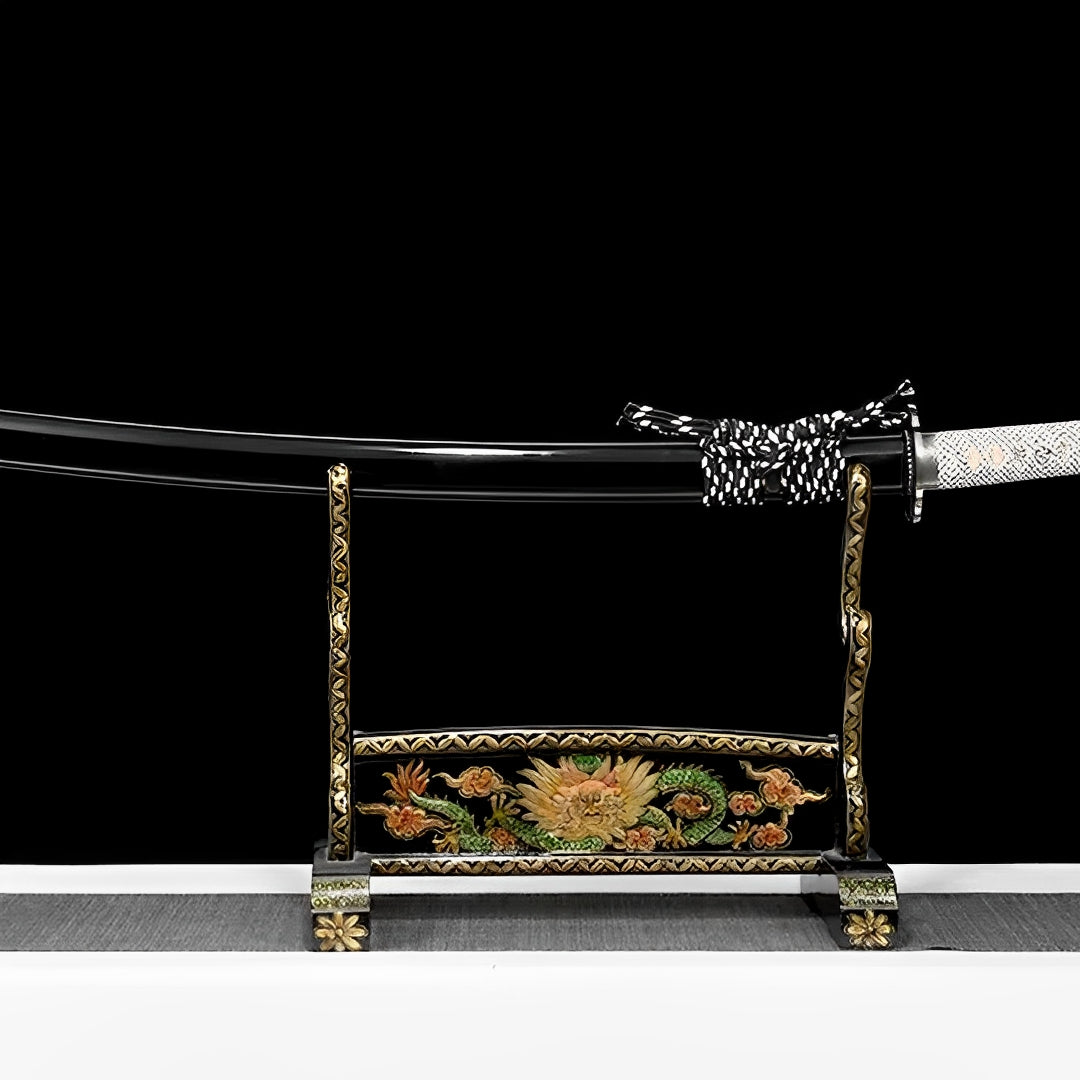
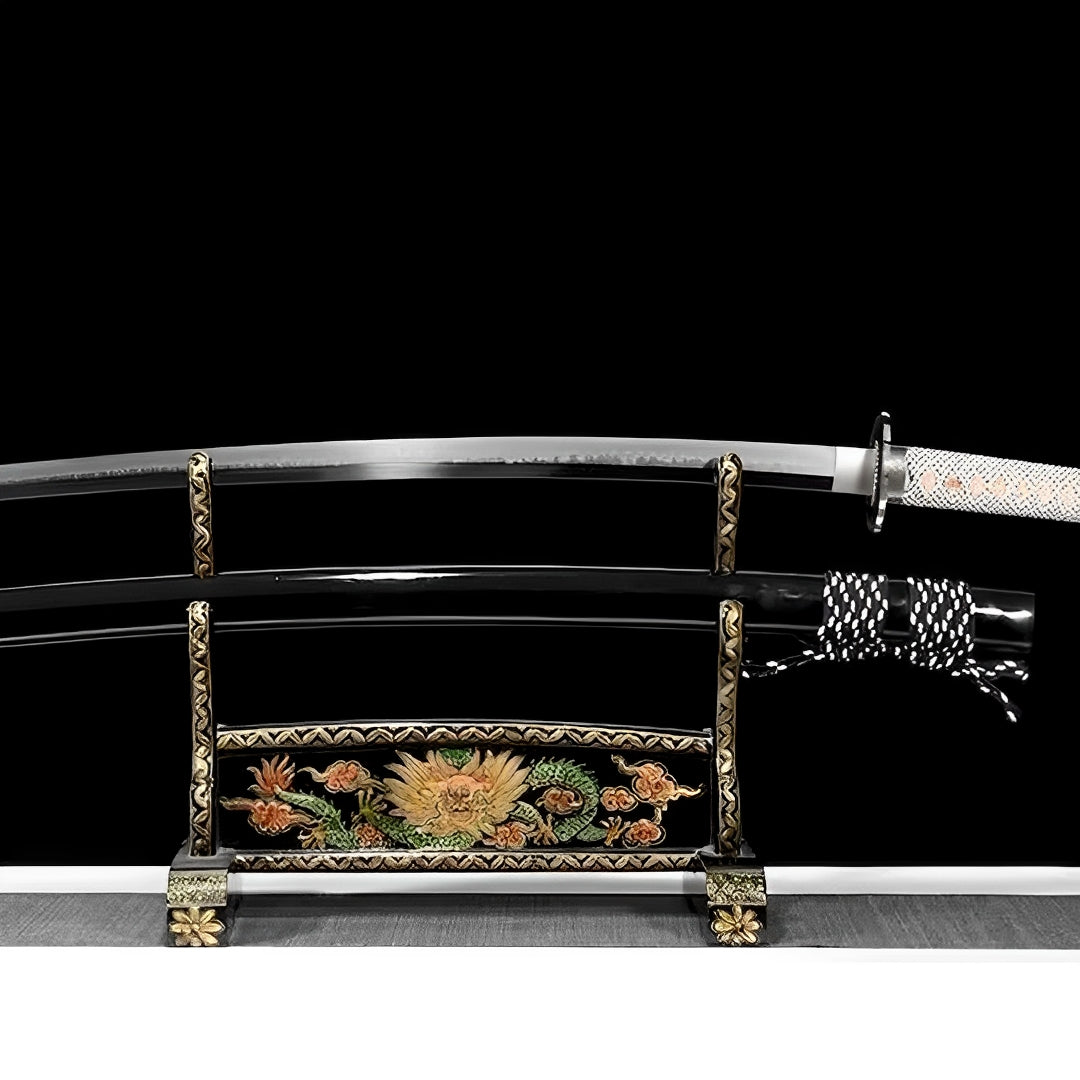
Why choose us
Ships within 48/72h
Forged Blade
Collector Quality
Trusted Globally
Inspired by Japan
Shirokuro Katana (T10 Steel & Hamon) - 白黒
Popular upgrades
Free Shipping over $250
No Bots, No AI
Refund Guaranteed
Free Shipping over $250
No Bots, No AI
Our team is here to help with any questions or concerns.
We’re always happy to assist you — don’t hesitate to reach out.
Why choose us
Ships within 48/72h
Forged Blade
Collector Quality
Trusted Globally
Inspired by Japan

Shirokuro Katana (T10 Steel & Hamon) - 白黒
Specifications
- Full tang in the handle
- SHARP blade
- Hand-forged
- Blade material: T10 steel with hamon
- Hand-polished finish
- Habaki material: Brass
- Silver-finished brass tsuba
- Lacquered solid wood saya
- Koiguchi & Kurigata made of buffalo horn
- Solid wood tsuka wrapped in genuine ray skin
- Tsuka-ITO made of silk with hishigami
- Total length: 105 cm
- Blade length: 72 cm
- Blade width: 3.2 cm
- Blade thickness: 0.7 cm
- Handle length: 30 cm
-
Included: Katana and its scabbard
Shirokuro Katana - Monochrome Duality Absolute Contrast
Master opposites through Shirokuro Katana, blade where extremes define each other. This philosophical black-white duality sword refuses compromise - absolute white meeting absolute black with no gray mediating, stark contrast creating visual clarity through refusing gradation, the entire aesthetic embodying yin-yang principle that opposites don't conflict but complete, asking whether you'll seek comfortable middle ground where nothing offends yet nothing excites or embrace extremes understanding that light exists only because darkness provides context, that beauty emerges from tension between opposites rather than their comfortable reconciliation.
Monochrome Philosophy Foundation
Shirokuro (白黒 - literally "white-black") represents more than color palette description - it encapsulates Japanese philosophical tradition exploring how opposites create meaning through their interaction, how purity (white) and void (black) need each other existing, how removing one concept eliminates the other's significance. This duality wisdom blade channels centuries of Eastern philosophy recognizing that binary oppositions aren't problems requiring resolution but natural complementary forces creating dynamic balance when held in tension rather than collapsed into gray uniformity.
Traditional Japanese aesthetics specifically celebrated monochrome expression through multiple art forms - sumi-e ink painting reduced visual world to black brush strokes on white paper yet captured essence more effectively than color ever could, Go board game's black and white stones created universe of strategic complexity from simplest possible palette, calligraphy's black characters on white surface communicated meaning through form transcending mere words. The essential expression sword continues that tradition proving that eliminating color doesn't impoverish but clarifies, that constraint breeds creativity impossible when unlimited options paralyze through excessive choice.
Buddhist philosophy particularly explored emptiness (white void) and form (black manifestation) as interdependent - form is emptiness, emptiness is form, the Heart Sutra teaching that apparent opposites resolve into non-duality when properly understood. Yet paradoxically, understanding that non-duality requires maintaining distinction between concepts, the Shirokuro blade embodying that paradox: white and black remain absolutely distinct yet create unified aesthetic proving separation and unity coexist without contradiction.
Contemporary minimalism often misunderstands monochrome as mere aesthetic choice - "black and white looks sophisticated" - missing deeper philosophical commitment to essentialism where everything unnecessary gets eliminated leaving only what matters absolutely. The philosophical reduction blade represents that commitment: no colors providing emotional shortcuts, no gradients softening transitions, no compromises permitting comfortable middle grounds, only stark alternatives forcing engagement with extremes.
Philosophy collectors specifically appreciate pieces embodying complex ideas through simple means, recognizing that apparent simplicity often conceals profound depth, that choosing black-white monochrome represents philosophical stance about clarity, essentialism, the relationship between opposites, not mere decorative preference saving manufacturing costs through color elimination.
Contrast Mastery Aesthetic
The absolute contrast between pure white sections and deep black elements creates this blade's defining visual strategy - not gradual transition but abrupt boundaries where one extreme yields instantly to opposite, the harsh division creating psychological impact impossible achieving through subtle gradations. This boundary definition sword proves that clarity emerges from decisive choices, that ambiguity sometimes confuses rather than enriches, that knowing exactly where white ends and black begins provides orientation impossible when everything exists in gray fog.
Specifically, high-contrast design activates human visual processing powerfully - our eyes evolved detecting edges and boundaries for survival (predators hiding in foliage), the neurological hardwiring making stark contrasts psychologically arresting regardless of cultural conditioning. The monochrome palette therefore isn't arbitrary aesthetic but taps into perceptual mechanisms transcending cultural specificity, the universal visual blade speaking to anyone with functioning vision regardless of artistic training or cultural background.
Traditional Japanese design specifically explored contrast principles through ma (間 - negative space) - the emptiness between objects creating meaning equal to objects themselves, white space in composition active element rather than passive background, the relationship between filled and empty defining both. The Shirokuro aesthetic maximizes that principle: white sections aren't merely white-painted surfaces but represent emptiness, black sections embody fullness, the blade becoming meditation on how absence and presence define each other through their interaction.
Photography's history specifically validates monochrome's power - black and white photography survived color photography's invention because certain subjects, certain moods, certain truths reveal themselves more clearly without color's emotional manipulation, the reduction to grayscale forcing engagement with form, composition, light rather than chromatic distraction. The photographer's blade appeals to that aesthetic understanding that sometimes less information communicates more truth, that eliminating color focuses attention on what remains.
Yin-Yang Balance Symbol
The black-white combination specifically invokes yin-yang cosmology - complementary opposites whose interaction generates all phenomena, neither superior but each containing seed of opposite within itself (white dot in black, black dot in white), the dynamic balance creating stability through perpetual motion rather than static equilibrium. This cosmic balance blade embodies that principle: white and black don't neutralize into gray but maintain tension creating energy impossible in uniform color, the sword literally depicting fundamental forces traditional Chinese and Japanese philosophy identified as generating reality itself.
Specifically, yin (dark, receptive, feminine, earth) and yang (light, active, masculine, heaven) exist through their relationship - neither has independent meaning but only significance relative to opposite, the interdependence creating both through mutual definition. The blade's stark monochrome therefore isn't mere decoration but philosophical statement about reality's nature: meaning emerges from relationship, distinction enables recognition, opposites create rather than cancel each other.
Traditional martial arts specifically incorporated yin-yang principles into combat philosophy - hard and soft techniques complementing each other, attack and defense flowing seamlessly, strength and flexibility alternating situationally, the warrior embodying both extremes rather than choosing one exclusively. The tactical duality weapon therefore serves martial context literally and philosophically: the steel cuts (yang) yet flexes (yin), the wielder attacks (yang) yet defends (yin), the combat dance alternating opposites achieving victory through balanced integration rather than extreme commitment.
Contemporary psychology recognizes similar principles through concepts like "both/and thinking" versus "either/or thinking" - mature cognition holds contradictions in tension rather than forcing false resolution, understanding that life's complexity requires embracing paradox rather than demanding simplistic consistency. The psychological maturity blade represents that developmental achievement: accepting that apparent opposites can coexist, that maintaining distinction between concepts enables rather than prevents their integration, that wisdom involves navigating between extremes rather than collapsing them into comfortable mediocrity.
Sumi-e Ink Tradition
The monochrome aesthetic specifically connects to sumi-e (墨絵 - ink painting) - traditional Japanese painting using only black ink on white paper yet capturing landscapes, portraits, nature with power color painting rarely achieves. This ink tradition blade honors centuries of masters proving that removing color focuses energy on essential qualities - form, composition, brushwork technique, the spirit (気韻 ki-in) animating subject rather than superficial chromatic accuracy.
Traditional sumi-e specifically emphasized single brush stroke capturing subject's essence - no sketching, no erasing, no second chances, the painter's lifetime training culminating in moment when brush contacts paper committing irrevocably, the discipline requiring perfecting technique until spontaneous expression achieves precision planning cannot. That philosophical approach applies to shirokuro sword design: the stark black-white permits no compromise, no gradual adjustments, only clear decisive boundaries requiring commitment to aesthetic vision rather than cautious hedging allowing retreat.
The varying ink density in sumi-e created tonal range despite using single pigment - wet brush created deep blacks, dry brush produced grays, the artist controlling water-ink ratio achieving value gradations within nominally "monochrome" palette. However, Shirokuro sword specifically rejects those gradations, choosing absolute contrast instead, the difference proving that even within monochrome aesthetics multiple philosophical approaches exist: sumi-e's nuanced gradations versus shirokuro's stark boundaries, both valid but serving different purposes requiring different aesthetic commitments.
Contemporary Western art specifically rediscovered monochrome's power through abstract expressionism, minimalism, conceptual art movements recognizing that eliminating color enables focusing on other elements - form, texture, space, concept - the reduction revealing what chromatic excess conceals. The cross-cultural monochrome blade demonstrates that different traditions independently recognize similar truths about how constraint enables rather than limits creativity, that sometimes less proves more not through poverty but through refined understanding of what truly matters.
Pure Contrast Collection
This essentialist piece serves collectors who appreciate aesthetic restraint, who recognize that sophisticated taste often involves what you choose not including rather than what you pile on, who understand that black-white monochrome represents deliberate philosophical choice rather than budget limitation or decorative timidity. The stark palette proves confidence: no colors hiding compositional weaknesses, no gradients softening awkward transitions, no compromises permitting comfortable ambiguity, only bold commitment to extremes creating clarity through refusing mediation.
Interior design contexts specifically welcome monochrome pieces as anchoring visual palette - where colorful objects compete for attention creating chaos, black-white sword provides calm certainty, the stark contrast organizing visual hierarchy preventing spaces from becoming cluttered noise. The design foundation blade works universally across styles from traditional Japanese rooms to modern minimalist apartments to industrial lofts, the timeless palette ensuring relevance regardless of passing color trends.
Photography documentation benefits enormously from high-contrast subjects - the monochrome sword photographs beautifully in black-and-white photography emphasizing form and composition, yet also works in color photography where its lack of chromatic distraction allows background elements providing context without visual competition. That photographic versatility matters for collectors documenting collections professionally or sharing on social media where image quality determines engagement.
Investment value specifically favors timeless aesthetics over trend-dependent designs - colorful pieces date themselves as popular colors cycle through fashion, monochrome remains perpetually relevant because it exists outside color trend cycles, the black-white combination working equally well in any decade. The timeless investment blade therefore represents safer long-term holding than pieces depending on specific color popularity maintaining market demand.
The philosophical aesthete sword particularly appeals to collectors who've progressed beyond surface prettiness into appreciating depth, who recognize that simple appearances often conceal complex thought, who understand that choosing monochrome palette represents philosophical commitment to essentialism, clarity, the productive tension between opposites, not mere decorative restraint or cost-cutting expediency. The blade becomes conversation piece about contrast, duality, how opposites define each other, the philosophical traditions recognizing these principles across multiple cultures independently discovering similar truths about reality's nature.
Care Instructions: Maintain this contrast masterwork understanding monochrome shows imperfection mercilessly. The white sections demand constant vigilance - fingerprints, dust, discoloration all visible immediately against pure background, the pristine appearance requiring dedicated maintenance matching aesthetic's uncompromising standards. The black elements similarly show scratches and wear clearly against deep background. Polish carefully maintaining sharp boundaries between white and black - the contrast's power depends on clean divisions, any blurring or contamination across boundary weakens visual impact. Store in climate-controlled environment; the white particularly vulnerable to yellowing under UV exposure or temperature extremes. Handle knowing this represents specific philosophical tradition where opposites create meaning through their interaction, where clarity emerges from decisive boundaries, where refusing compromise between extremes proves wiser than seeking comfortable middle grounds eliminating tension. Display where lighting emphasizes contrast - side lighting creates shadows emphasizing dimensional elements while maintaining black-white distinction, flat lighting can wash out subtleties within each extreme. Consider this blade teaching about how meaning emerges from relationship, how distinction enables recognition, how apparent opposites can coexist productively when held in dynamic tension rather than collapsed into gray uniformity. The shirokuro reminds: light needs darkness, darkness needs light, form needs emptiness, emptiness needs form, the dance between opposites creating universe more interesting than homogeneous middle ground where nothing stands out because everything blends into comfortable sameness avoiding extremes yet sacrificing vitality only contrast provides.
White. Black. No gray between. Clarity through contrast. Opposites complete, don't compete. Shirokuro defines through division.
Legal Disclaimer
By purchasing from Katana Corp, you acknowledge and agree that:
- You are at least 18 years of age (or the age of majority in your jurisdiction).
- You are solely responsible for verifying and complying with all local laws and import regulations before placing an order.
- Some countries prohibit the importation of swords entirely. Katana Corp is not responsible for orders delayed, seized, or refused by customs authorities.
- All katanas and related products are sold strictly as decorative and display items. They are not intended or certified for combat use.
- Depending on the jurisdiction, swords may legally be considered bladed weapons, subject to specific restrictions or prohibitions.
- Katana Corp disclaims all liability for any injury, damage, or legal consequences resulting from misuse, abuse, or unlawful use of its products.
For full details, please refer to our Terms of Service.
Care & Maintenance
To maintain your katana's appearance and performance over time, we recommend:
- Regularly wiping the blade with a soft cloth to remove fingerprints and moisture.
- Applying a light coat of choji oil to prevent rust (for carbon steel blades).
- Storing the sword in a dry place, preferably inside its saya.
- Avoiding direct contact with hard surfaces to preserve sharpness and finish.
For more care tips, check our full maintenance guide in the FAQ section.
Behind the Blade
Every katana we offer carries the essence of centuries-old craftsmanship.
More than just a weapon, the katana symbolizes discipline, honor, and mastery.
Our artisans draw inspiration from traditional forging methods to ensure each blade reflects the spirit of the samurai — strength, precision, and soul.
Owning one is not just about aesthetics — it’s about carrying a piece of that legacy.
User Experience
This katana is designed to offer a perfect balance between blade and handle.
Its ergonomic tsuka (handle) allows a secure two-handed grip, while the weight distribution ensures smooth, fluid movement.
Whether for training, display or cutting practice, handling feels natural and precise.
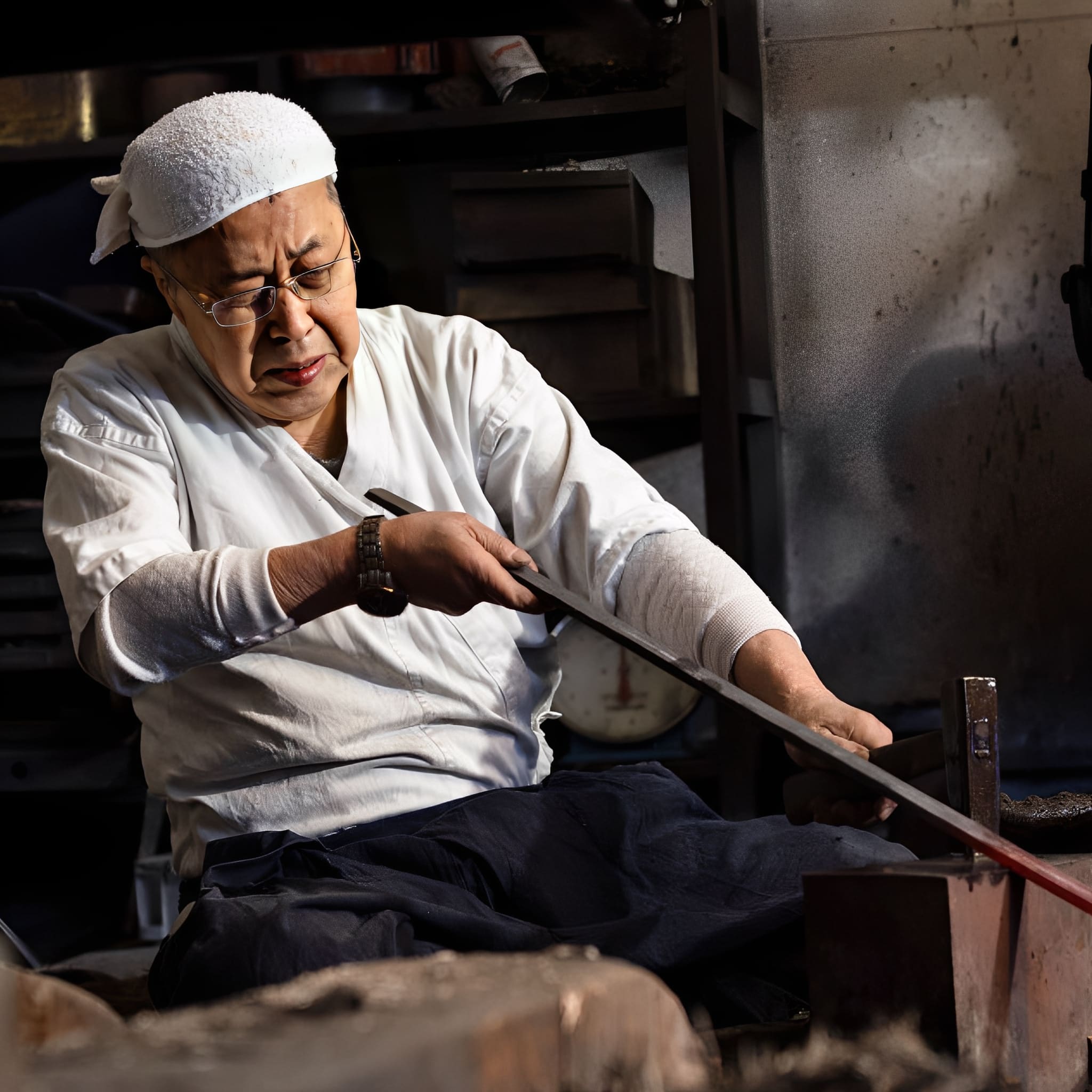
The Art of Traditional Forging
Each katana we craft is born from centuries of samurai tradition.
Our master smiths shape every blade by hand, folding the steel to achieve unmatched strength, flexibility, and beauty.
This time-honored process is not just about creating a weapon? it’s about preserving a legacy of discipline, honor, and artistry.
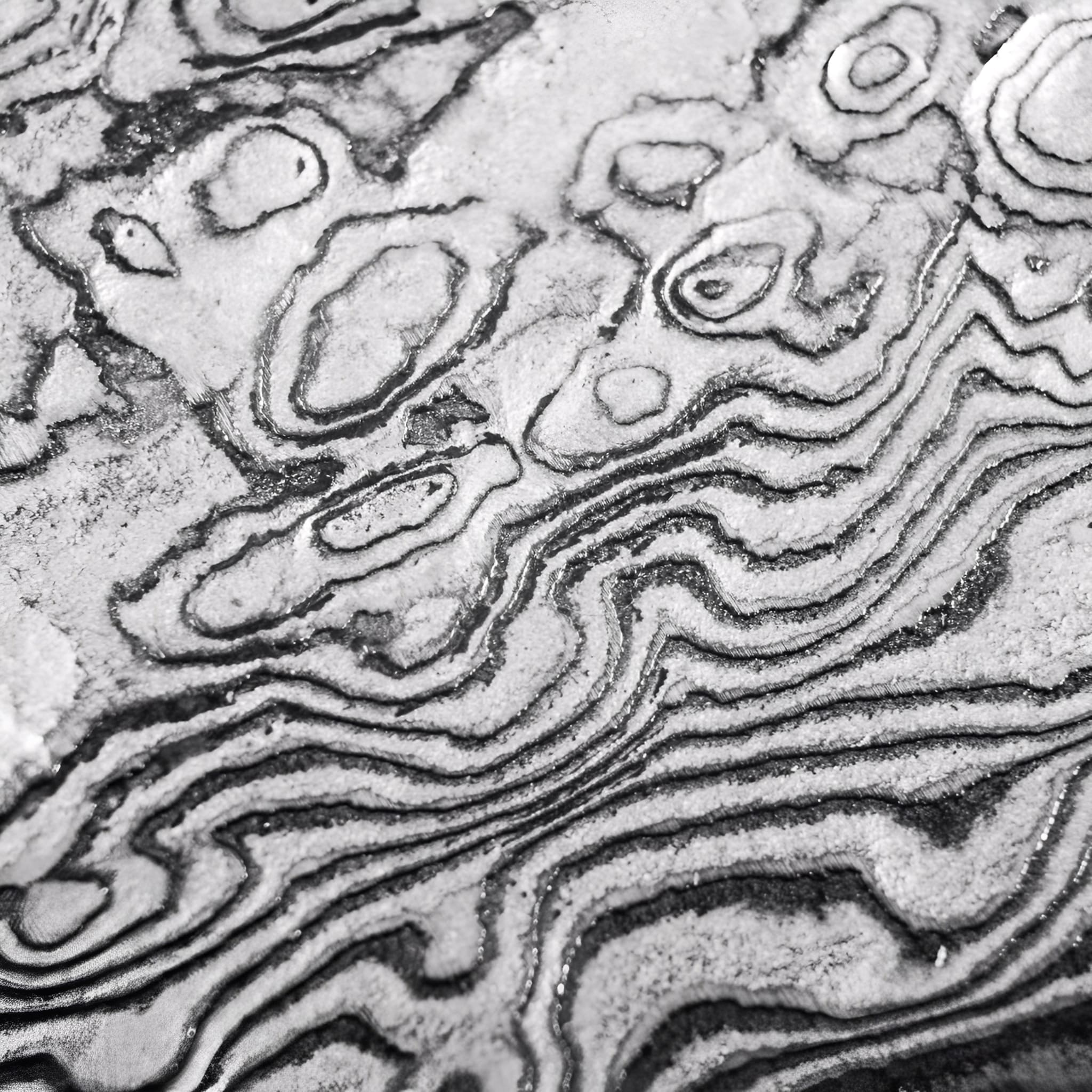
Materials Chosen Without Compromise
We select only the highest-grade steels and authentic fittings to ensure every katana is both a masterpiece and a reliable companion.
From the flawless hamon line to the perfectly balanced tang, each detail is carefully inspected to meet the highest standards of performance and aesthetics.
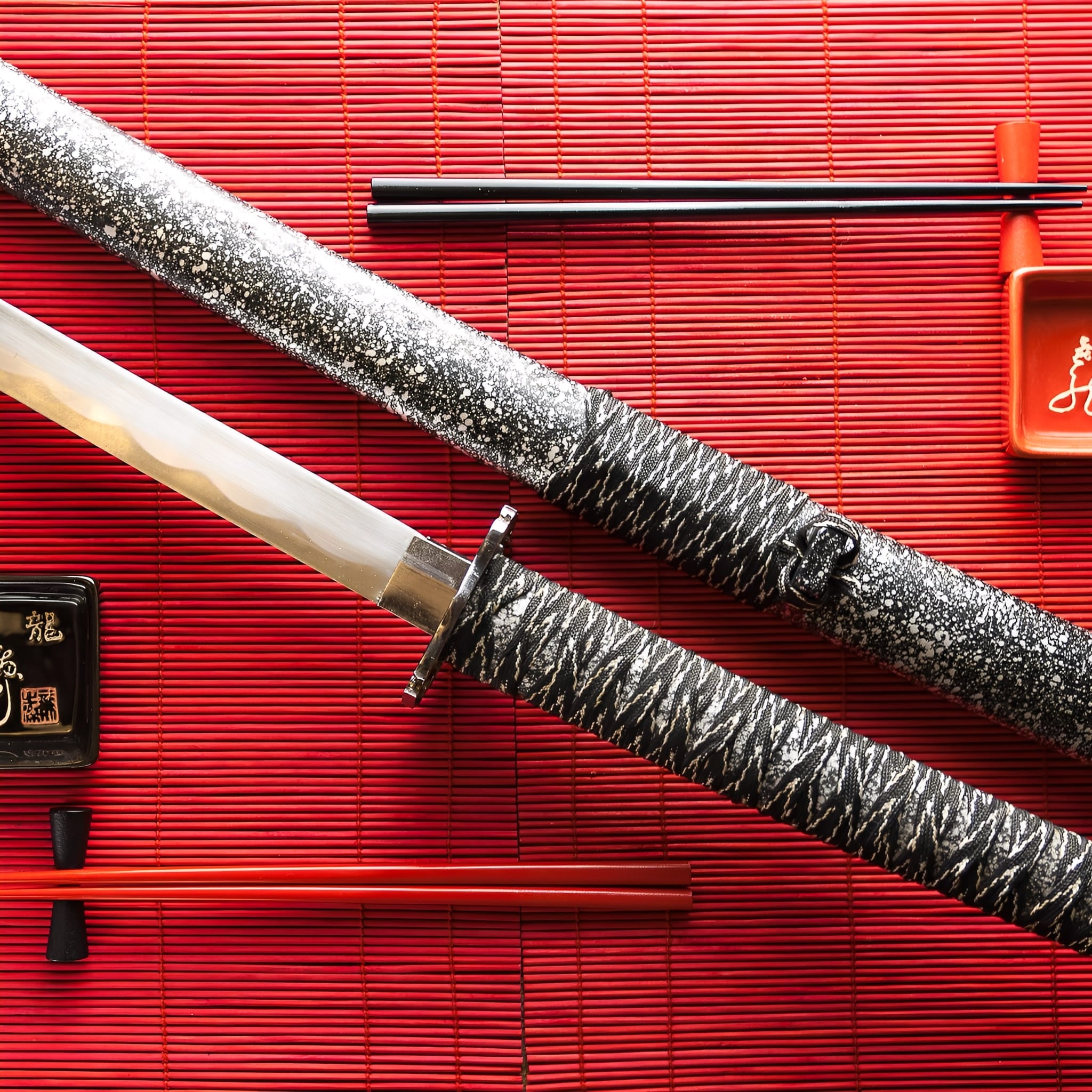
More Than a Sword, A Lifelong Legacy
Owning a handmade katana is an experience that goes beyond the blade itself. It’s holding history, tradition, and craftsmanship in your hands.
Whether displayed as a work of art or wielded with precision, your katana will stand as a symbol of timeless skill and dedication for generations to come.
-
Key Destinations
United States: 5–7 days
Canada: 5–7 days
Australia: 6–9 days
Denmark: 4–6 days
Netherlands: 3–5 days
Sweden: 4–6 days
Switzerland: 3–5 days
Finland: 5–7 days
Singapore: 6–8 days -
Central European Partners
France: 2–3 days
Germany: 3–5 days
Spain: 4–6 days
Italy: 4–6 days
Belgium: 3–5 days
Austria: 4–6 days
Ireland: 4–6 days
Poland: 4–6 days
Portugal: 4–6 days -
Extended EU Network
Czechia: 4–6 days
Hungary: 4–6 days
Slovakia: 4–6 days
Slovenia: 5–7 days
Romania: 5–7 days
Bulgaria: 5–7 days
Croatia: 5–7 days
Serbia: 5–7 days
Estonia: 5–7 days
Latvia: 5–7 days
Lithuania: 5–7 days
Luxembourg: 3–5 days
Greece: 5–8 days -
FAQ’s
Visit our FAQs page to find answers to common questions.